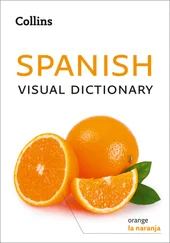Japanese vowels
| Japanese |
sounds like |
example |
| a |
a |
bath |
| i |
i |
police |
| u |
u |
put |
| e |
e |
let |
| o |
o |
got |
Long vowel sounds
| aa, ii, uu, ee, oo |
approximately double the length of other syllables |
15 basic consonants
k, s, sh, t, ts, ch, n, h, m, y, r, w, g, z, d, b, p, n/mEach consonant is followed by one vowel to create a syllable as in
| ki-mo-no |
traditional Japanese costume |
| Ta-na-ka |
Japanese surname |
These consonants are close to their English equivalents but note the following:
gis pronounced as in golf, not as in Germany yis pronounced as in young, not as in cr y.
The consonant n/m, which appears at the end of the list above, counts as a syllable in its own right. It is pronounced like the nasal n in si ng when it appears at the end of words, e.g. e n‘yen’, and before most other sounds, e.g. o nse n‘hot spring’. Before p, b and m, it sounds more like m and is therefore written here as m, e.g. shi mbun ‘newspaper’. When n appears before a vowel or y, it is written as n’ to distinguish it from the syllables beginning with n, e.g. ki n’en ‘non-smoking’ compared with ki nen ‘commemoration’.
Since Japanese lacks the consonants land v, foreign loanwords with these letters are pronounced with rand b, respectively. Thus, English words ‘love’ and ‘rub’ both become indistinguishable as ra-buin Japanese.
Japanese also lacks the sisound (as in ‘to sit’): shiis used instead, sometimes with embarrassing results! Other English sounds that do not exist in Japanese are hu(as in ‘hook’: fuis used instead); th(as in ‘thin’: shiis used instead); and ti(as in ‘tin’: chiis used instead).
Double consonants kk, pp, ssand ttare written before a vowel, which indicates a pause equivalent to one syllable in length before that consonant. The sound before the pause tends to become sharper than at other times.
| Japanese |
Pronunciation |
Meaning |
| kitte |
ki (pause) te |
stamp |
| kippu |
ki (pause) pu |
ticket |
ki, shi, chi, ni, hi, mi, ri, gi, ji, biand pisounds can be combined with ya, yuor yoto create combined syllables. For example, ki + yabecome kya, ki + yubecome kyuand ki + yobecome kyo. Examples of this can be found in the words Tookyooand Kyooto, where the combined syllable is pronounced as two sounds, but said very quickly with the same length as one syllable.
| Japanese |
Pronunciation |
Meaning |
| matchi |
ma (pause) chi |
match |
In the case of the chisyllable, a double consonant sound is written as tchias in the example above.
You should also remember that Japanese does not have a silent eat the end of a word such as in the English ‘to take’. If ‘take’ is read as the Japanese word take(bamboo), it should be pronounced tah-keh. Similarly sake(rice wine), is pronounced sah-keh, etc.
However, the vowel uat the end of a word such as desuwill sound very weak.
Top ten tips
1Always remember to remove your shoes before entering someone’s home. Before stepping on tatamimatting, slippers must also be removed. Slippers must be changed when going to the toilet. Remember not to leave the toilet still wearing the toilet slippers, as it would be very embarrassing!
2Always make sure that you do not have any holes in your socks or tights, as you may have to take your shoes off unexpectedly.
3Shaking hands is uncommon in Japan; Japanese people greet each other by bowing. However, foreigners are sometimes greeted with a handshake.
4 Sumimasenis a word with many purposes: it can be used to attract someone’s attention before making a request, or to get past people on a crowded train. It can also be used to say ‘sorry’.
5Credit cards are only accepted in the more expensive hotels, shops and restaurants.
6If you receive a gift from a Japanese visitor, ask if you can open it before doing so. If you are invited to a Japanese person’s house, make sure you take a gift-wrapped present with you.
7You can only buy cigarettes and alcohol if you are over 20 years of age. You will be asked to produce ID to prove your age.
8Japanese people tend not to use assertive words such as ‘yes’ and ‘no’. Good alternatives are ii desu ne, which literally means ‘that sounds good’, for ‘yes’ and chottofor ‘no’.
9Cleanliness is important to Japanese people. Never drop or leave rubbish.
10It’s advisable that you carry proof of identity at all times, so make sure that you always have your passport with you.
Talking to people
Hello/goodbye, yes/no
In Japanese there is no exact equivalent for the word ‘hello’ – different greeting words are used based on the time of the day. Similarly, the word chotto(whose literal meaning is ‘a bit’) is influenced by body language: if said with one’s head slightly tilted, it means ‘no’.
| Hello |
こんにちはkonnichiwa |
| Good morning |
おはようございますohayoo gozaimasu |
| Good evening |
こんばんはkombanwa |
| Good night |
おやすみなさいoyasuminasai |
| Goodbye |
さようならsayoonara |
| See you later |
じゃまたja mata |
| See you tomorrow |
また明日mata ashita |
| How are you? |
お元気ですかogenki desu ka? |
| Fine, thanks |
はい、元気ですhai, genki desu |
| And you, Mr/Ms...? |
...さんは...san wa? |
| Please |
お願いしますonegai shimasu |
| Thank you |
ありがとう (ございます)arigatoo (gozaimasu) |
| You’re welcome |
どういたしましてdoo itashimashite |
| Excuse me! |
ごめんなさいgomennasai! |
| Sorry! |
すみませんsumimasen! |
| Yes |
はいhai |
| No |
いいえiie |
| Um... |
ちょっと…chotto... |
| Yes, please |
はい、お願いしますhai, onegai shimasu |
| No, thanks |
いいえ、結構ですiie, kekkoo desu |
| Sir… |
…氏…shi |
| Mr…/Madam…/Mrs…/Ms…/Miss… |
…さん…san |
| I don’t understand |
わかりませんwakarimasen |
| I don’t speak Japanese |
私は日本語を話せませんwatashi wa nihongo o hanasemasen |
| England/English |
イングランド/イングランド人ingurando/ingurando-jin |
| Scotland/Scottish |
スコットランド/スコットランド人sukottorando/sukottorando-jin |
| Wales/Welsh |
ウェールズ/ウェールズ人weeruzu/weeruzu-jin |
| Ireland/Irish |
アイルランド/アイルランド人airurando/airurando-jin |
| USA/American |
アメリカ/アメリカ人amerika/amerika-jin |
| Australia/Australian |
オーストラリア/オーストラリア人oosutoraria/oosutoraria-jin |
Bowing おじぎ ojigi
Читать дальше












